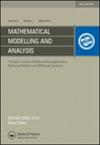基于曲率的径向基函数表征:在插值中的应用
IF 1.4
3区 数学
Q1 MATHEMATICS
引用次数: 0
摘要
选择径向基函数(rbf)的尺度或形状参数是基于核函数的方法中一个有充分文献记载但仍未解决的问题。根据实际应用对其进行调整是很常见的,它对方法的准确性和稳定性起着至关重要的作用。在本文中,我们首先设计了rbf的形状参数与其在每个点的曲率之间的直接关系。这导致将rbf描述为可伸缩的和不可伸缩的。我们证明了所有可伸缩rbf都属于-类,这意味着它们在xj点的曲率与成正比,其中cj是xj点对应的空间可变形状参数。然后根据它们的曲率对一些最常用的rbf进行表征和分类。然后,平面曲线的基本理论帮助我们从分散的数据中恢复单变量函数,通过强制精确和近似解在它们相交的点具有相同的曲率。这导致引入基于曲率的缩放rbf,其形状参数取决于待逼近函数的函数值和近似曲率值。数值实验表明,该方法优于标准定尺度基础和其他形状参数选择方法。本文章由计算机程序翻译,如有差异,请以英文原文为准。
Curvature based characterization of radial Basis Functions: Application to interpolation
Choosing the scale or shape parameter of radial basis functions (RBFs) is a well-documented but still an open problem in kernel-based methods. It is common to tune it according to the applications, and it plays a crucial role both for the accuracy and stability of the method. In this paper, we first devise a direct relation between the shape parameter of RBFs and their curvature at each point. This leads to characterizing RBFs to scalable and unscalable ones. We prove that all scalable RBFs lie in the -class which means that their curvature at the point xj is proportional to, where cj is the corresponding spatially variable shape parameter at xj. Some of the most commonly used RBFs are then characterized and classified accordingly to their curvature. Then, the fundamental theory of plane curves helps us recover univariate functions from scattered data, by enforcing the exact and approximate solutions have the same curvature at the point where they meet. This leads to introducing curvature-based scaled RBFs with shape parameters depending on the function values and approximate curvature values of the function to be approximated. Several numerical experiments are devoted to show that the method performs better than the standard fixed-scale basis and some other shape parameter selection methods.
求助全文
通过发布文献求助,成功后即可免费获取论文全文。
去求助
来源期刊
CiteScore
2.80
自引率
5.60%
发文量
28
审稿时长
4.5 months
期刊介绍:
Mathematical Modelling and Analysis publishes original research on all areas of mathematical modelling and analysis.

 求助内容:
求助内容: 应助结果提醒方式:
应助结果提醒方式:


